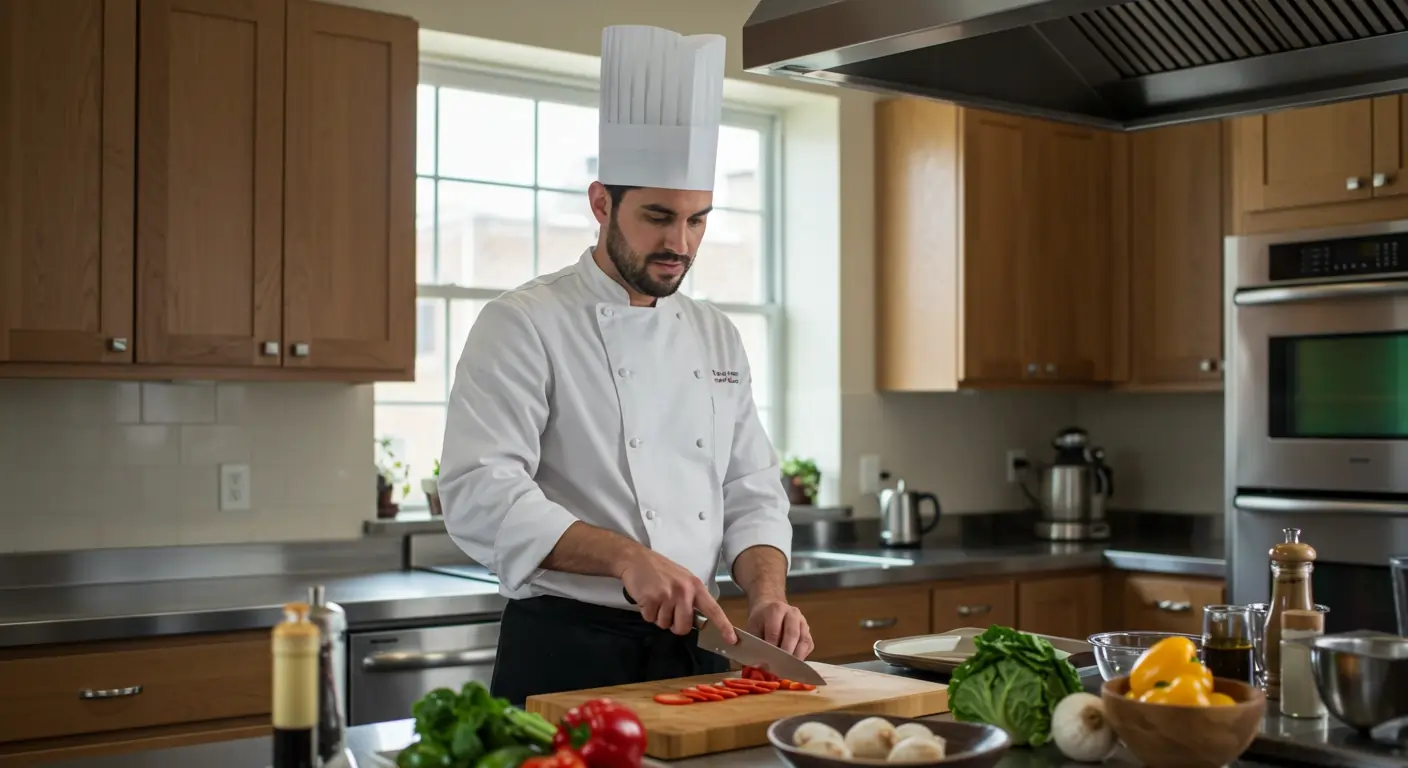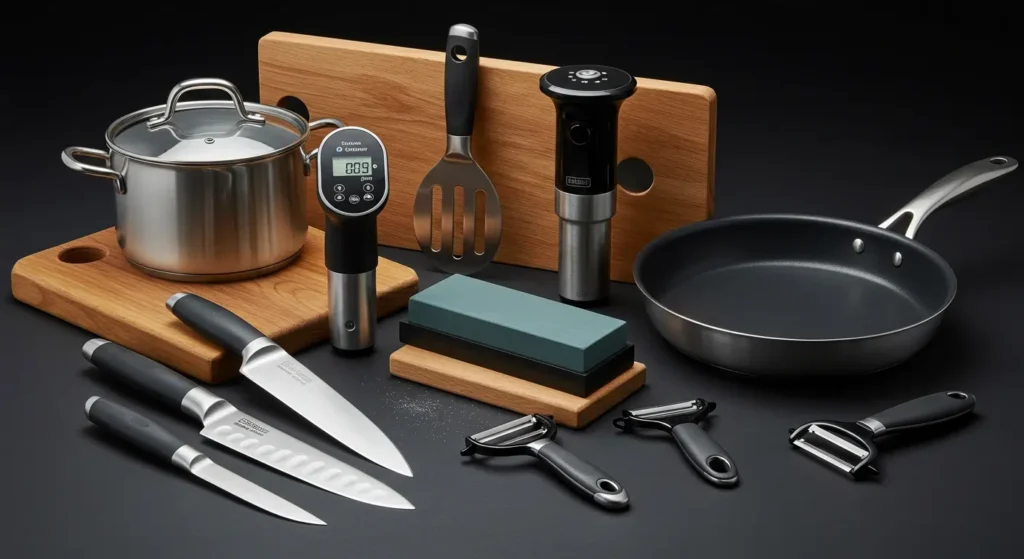Elite Cooking Techniques and Methods for Elevated Home Cooking

Table of Contents
Did you know that the difference between a good meal and a gourmet masterpiece lies in the techniques and methods used in the kitchen? Elevating your cooking from the ordinary to the extraordinary is not just about using expensive ingredients but mastering elite cooking techniques and methods that professional chefs swear by. Whether you’re a culinary enthusiast or an aspiring home cook, learning these techniques will transform the way you approach cooking and the results you achieve.
In this comprehensive guide, we’ll delve into the world of elite cooking, exploring the fundamental techniques, essential tools, and step-by-step methods that will take your cooking to the next level. By the end of this article, you’ll be equipped with the knowledge to create restaurant-quality dishes in the comfort of your own kitchen.
The Foundation of Elite Cooking Techniques
Elite cooking techniques are more than just following a recipe; it’s about understanding the science behind the cooking techniques. What separates a basic home cook from a professional chef is the mastery of fundamental skills and an understanding of how ingredients behave when subjected to different methods.
Professional cooking techniques have a rich history, dating back to the culinary schools of France, where the foundation of modern cooking was laid. These techniques emphasize precision, attention to detail, and the ability to coax maximum flavor from ingredients. The essence of elite cooking lies in the ability to execute these techniques flawlessly, ensuring consistency and excellence in every dish.
To build a strong foundation, start by mastering the basics. If you’re new to cooking, consider revisiting the fundamentals of knife skills and kitchen essentials.
For a deeper dive into the importance of technique, check out this resource from The Culinary Institute of America.
Essential Tools for Advanced Cooking Techniques
Before diving into specific cooking techniques, ensure you have the right tools in your arsenal. Elite cooking requires precision and quality equipment to achieve professional results.
- Knives and Cutting Boards: A sharp, high-quality chef’s knife is indispensable. Pair it with a durable cutting board that can withstand heavy use.
- Temperature Control Equipment: Precision is key in elite cooking. Digital instant-read thermometers and sous vide machines help you achieve exact temperatures.
- Specialty Cookware: Invest in high-quality pots, pans, and utensils designed for specific cooking methods.

Organizing your kitchen is just as important as having the right tools. Check out our guide to Kitchen Organization for tips on optimizing your workspace. (Internal Link)
Elite Knife Skills and Preparation Techniques
Knife skills are the cornerstone of elite cooking. Proper knife handling, precision cutting, and mise en place are basic professional cooking techniques.
Professional Knife Handling
Mastering knife handling is the first step to cooking like a pro. A sharp knife is an extension of your hand, and proper grip and cutting motions ensure safety and efficiency. Practice slicing, chopping, and dicing to develop muscle memory.
Advanced Cutting Techniques
Once you’ve mastered the basics, move on to advanced cutting techniques like brunoise (fine dice), julienne (matchsticks), and chiffonade (thin strips). These techniques not only improve the visual appeal of your dishes but also ensure even cooking.
Mandoline Slicer, Julienne Peeler.
Mise en Place Mastery
Mise en place (MEEs lay) is the French term for prepping all ingredients before cooking. This step ensures efficiency and reduces stress during the cooking process. Use prep bowls and storage containers to stay organized.
Glass Prep Bowls, Food Storage Containers.
Looking for more time-saving tips? Check out our post on Time-Saving Kitchen Hacks. (Internal Link)
Luxe Cooking Methods: Heat Application
Heat is one of the most critical elements in cooking, and mastering its application is key to elite cooking. From precise temperature control to dramatic flambé techniques, these methods will help you create dishes that impress.
Sous Vide Precision Cooking
Sous vide, which translates to “under vacuum,” is a method where food is sealed in a bag and cooked in a water bath at a precise temperature. This technique ensures even cooking and retains the natural flavors of the ingredients.
- What You Need: Sous vide machine, vacuum sealer, and a large container.
- Best for: Eggs, steak, fish, and delicate vegetables.
- Resources: For a deeper understanding, check out this guide on Sous Vide Cooking.
- Sous Vide Starter Kit.
French Flambé Techniques
Flambé cooking, where alcohol is added to a hot pan and ignited, adds drama and caramelized flavors to dishes. This technique requires precision and safety precautions.
- Safety First: Always use the right type of alcohol and never leave the pan unattended.
- Classic Recipes: Try making flambé steak or bananas foster.
- Flambé Pan, Premium Liquors.
Dry Heat Mastery: Broiling and Searing
Dry heat methods like broiling and searing are perfect for achieving the perfect Maillard reaction, the chemical process that browns food and enhances flavor.
- Tips:
- Always preheat your pan or oven.
- Pat dry ingredients before cooking to prevent steaming.
- Cook in a hot pan to achieve a crisp crust.
- Cast Iron Skillet, Carbon Steel Pan.
Check out our guide to Cooking the Perfect Steak for more tips on searing. (Internal Link)
Water Bath and Steam Infusion
Water bath and steam cooking are gentle methods ideal for delicate foods like fish, eggs, and vegetables. These techniques preserve nutrients and flavors without overcooking.
- Equipment: Steamer baskets, bamboo steamers, and water bath containers.
- Steamer Basket, Bamboo Steamer.
Molecular Gastronomy for Home Cooks
Molecular gastronomy, the science of cooking, is no longer reserved for Michelin-starred restaurants. With the right tools and ingredients, you can create food that’s as visually stunning as it is delicious.
Approachable Techniques for Home Cooks
- Spherification: Create bouncy pearls using sodium alginate and calcium chloride.
- Foams: Whip cream orAngles to create light, airy textures.
- Gels: Use agar agar or pectin to set liquids into firm, sliceable cubes.
Molecular Gastronomy Starter Kit, Sodium Alginate.
For a deeper understanding of the science behind these techniques, check out this article on Molecular Gastronomy. (External Link)
Elite Sauce and Flavor Development Techniques
A great sauce can elevate a dish from ordinary to extraordinary. Mastering sauce techniques is a hallmark of elite cooking.
Professional Reduction Methods
Reduction involves simmering a liquid to concentrate its flavors. This technique is perfect for creating rich, intense sauces like demiglace or jus.
- Tips:
- Use high-quality stock as the base.
- Skim impurities for a clear sauce.
- Heavy-Bottomed Saucepan.
Emulsion Mastery
An emulsion is a stable mixture of two or more liquids that don’t normally mix, like oil and water. Examples include mayonnaise, hollandaise, and vinaigrette.
- Troubleshooting: If your emulsion breaks, whisk in a little water or start over with a new egg yolk.
- Immersion Blender, Balloon Whisk.
Check out our recipe for Homemade Mayonnaise for a hands-on approach. (Internal Link)
Infusion and Extraction
Infusion involves extracting flavors from ingredients into a liquid, while extraction is the process of pulling out flavorful compounds.
- Examples: Herb-infused oils, tea-smoked meats, and cold-pressed juices.
- Oil Infuser, Specialized Strainer.
Plating and Presentation: The Final Elite Touch
Presentation is the final step in creating a gourmet meal. Professional plating techniques turn a delicious dish into a visually stunning masterpiece.
Professional Plating Techniques
- Color Theory: Use contrasting colors to make your dish pop. Add fresh herbs or garnishes for a touch of green.
- Composition: Balance your plate with protein, vegetables, and starch. Use height and texture to add visual interest.
- Garnishing Methods: Use edible flowers, microgreens, or artistic drizzles to add a finishing touch.
Incorporating Elite Techniques Into Daily Cooking
Elite cooking doesn’t have to be reserved for special occasions. With practice, these techniques can become part of your daily cooking routine.
- Start Small: Master one technique at a time before moving on to the next.
- Time-Saving Applications: Many advanced techniques, like sous vide, actually save time in the long run.
- Menu Planning: Incorporate new techniques into your weekly meal planning. (Internal Link: Meal Planning Guide)
Conclusion
Elite cooking is not just about impressing your guests; it’s about understanding the art and science of transforming ingredients into something extraordinary. By mastering these techniques, tools, and methods, you’ll unlock a world of culinary possibilities and elevate your home cooking to new heights.
As you embark on this journey, remember that practice is key. Start with one technique, experiment with new ingredients, and gradually incorporate more methods into your repertoire. Before long, you’ll be cooking like a professional.
Resources and Further Learning
To continue your culinary education, check out these recommended resources:
- Books:
- The Culinary Bible by Andrew Dornenburg and Karen Page
- Modernist Cuisine by Nathan Myhrvold
- Online Courses:
- Mastering Kitchen Techniques on Udemy
- Advanced Cooking Methods on America’s Test kitchen
- Online Resources:
- Free culinary lessons from culinaryclassroom.
- Chef’s YouTube Channel
With these elite cooking techniques and methods at your fingertips, there’s no limit to what you can create in your kitchen. Happy cooking, and bon appétit!
For More Kitchen Space guides and ideas.
Follow Us For More On:

